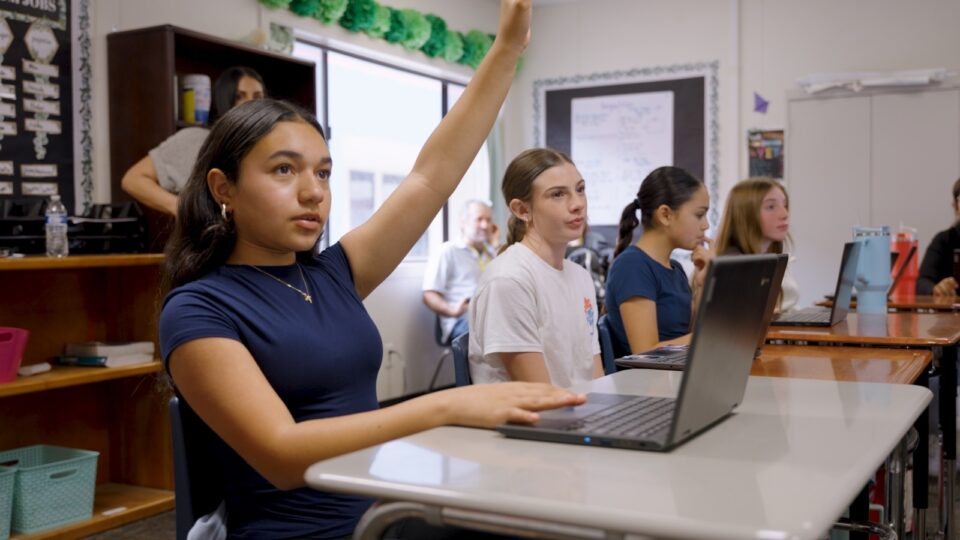
In today’s classrooms, technology has become more than just a helpful tool. It’s become a driving force that’s reshaping how students learn and teachers teach. From virtual field trips to AI-powered tutors, digital tools are transforming education in ways that were unimaginable just a decade ago. Let’s take a closer look at how technology affects education today.
Technology affects how students learn
Technology can shift the focus in the classroom from teacher-led instruction to a more personalized, engaging, and interactive experience for students. Here are some of the ways technology affects student learning.
Access to more resources
Students can extend their learning in a variety of ways, including educational videos or tutorials, ebooks or audio books, podcasts, online learning communities, and AI-powered tools that can tailor learning to their particular needs.
Greater choice in learning
Students can demonstrate learning in a variety of ways, including through video projects, multimedia presentations, digital portfolios, infographics, data visualizations, and interactive quizzes or games.
Real-time feedback
Digital programs can provide real-time feedback to students, delivering the right level of challenge or support at exactly the right time. Here are a few examples:
- Waggle for ELA and math alerts students to right and wrong answers and guides them to understanding. Students also earn badges for completing tasks and making progress, which encourages continued effort.
- Writable provides students with instant feedback on their drafts and highlights areas for improvement in clarity, organization, use of evidence, and grammar.
- Amira provides real-time feedback by listening to students read aloud, identifying errors instantly, and delivering targeted micro-interventions to support fluency and comprehension.
A more flexible pace
Students with access to technology can learn anytime, anywhere, and at their own pace. This means students who need more time to master a concept can take it, while others can keep moving ahead.
Technology affects classroom instruction
Technology has significantly affected classroom instruction, giving teachers more time and choice. Here are some of the ways technology affects classroom instruction.
More instructional delivery choices
Technology gives teachers more ways to bring lessons to life and keep students engaged. They can use tools like interactive whiteboards, videos, and simulations to make learning more hands-on and visual. Virtual field trips are another exciting option where students explore places like museums, national parks, or even the surface of Mars, all from the classroom. These experiences help students connect what they’re learning to the real world and make lessons more memorable.
Real-time insights into student learning
Some edtech solutions can provide teachers with instant insights into each student’s strengths and challenges. HMH Performance Suite, a classroom solution for K-8 ELA and math, aggregates all assessment results from HMH core programs with the results from NWEA MAP Growth. This gives teachers a real-time picture of what students know and what they need to learn. Even more importantly, it offers practical teaching recommendations that help drive student growth.
More time for small-group instruction
Technology can take on tasks like grading, lesson planning, and student data analysis that reduce prep time. HMH AI Tools can even help teachers generate custom quizzes, reading passages, and report card comments. This means teachers have more time to spend with students one-on-one and in small groups, building strong relationships that will benefit them in and out of the classroom.
Increased student collaboration
Thanks to technology, students don’t have to be in the same room to work on projects and presentations together. Using online tools, students can brainstorm, reflect, share ideas, or even play games together.
How technology is transforming teacher support
Technology is revolutionizing how teachers receive support, making it more personalized, accessible, and impactful than ever before. Instead of relying solely on scheduled workshops or in-person coaching, educators now have access to tools that can help with specific needs, anytime and anywhere. HMH Coachly, for example, provides unlimited live 1:1 coaching sessions designed to help teachers achieve their goals. Whether it's refining a lesson plan or navigating classroom challenges, the support is timely, targeted, and tailored to each teacher’s unique needs. This kind of tech-enabled coaching not only enhances instructional quality, but also allows teachers to grow on their own schedule.
The promise of technology
There are so many benefits of technology in the classroom. And as technology continues to evolve, so too does the potential to ensure every learner gets what they need to achieve real academic success. Technology engages students, empowers teachers, and opens doors to opportunities that once seemed out of reach. With the right tools and thoughtful implementation, technology can help every learner thrive.
This article was adapted from a blog post initially developed by the education technology company Classcraft, which was acquired by HMH in 2023. The views expressed in this article are those of the author and do not necessarily represent those of HMH.
***
Find more lesson plans and classroom resources on Shaped.
Discover best practices for integrating AI in the classroom.












